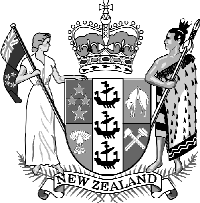Gavin's Home Page
The Treaty
Pre Treaty
> Pre-Treaty History of Aotearoa
> He
Wakaputanga O Te Rangatiratanga O Nu Tireni
> The
Declaration of Independence of New Zealand
The Treaty
> Te
Tiriti O Waitangi
> The
Treaty of Waitangi
> English Translation of the Māori Text
>
Commentary on the Treaty
> Locations
of Treaty Signings
> The
1869 Māori Translation
Post Treaty
> Legislative Violations of the Treaty
>Crown Apology to Ngai Tahu
> E Whakaae ana te Karauna ki a Ngai Tahu
> Plastic
Tiki and other Nasty Things
Any corrections or comments are welcome. Contact me.
Last updated 6 February
2001.
Site
History
Commentary on the Treaty by Network Waitangi Ōtautahi
AS YOU CAN SEE THERE ARE TWO DOCUMENTS:
The Treaty in Māori (including its translation into English) and the English version [see its 1869 translation into Māori].
The Treaty in Māori was signed by Captain Hobson and over 500 rangatira, over 40 of them at Waitangi on 6 February 1840.
The English version was signed only at Port Waikato/Manukau. There the Treaty in Māori was promoted but the English version was signed (by approximately 40 rangatira).
WHAT HAPPENS WHEN TWO TREATIES ARE INTERPRETED DIFFERENTLY?
In International Law
- in any ambiguity the contra proferentem principle applies, which means that a decision is made against the party that drafts the document, and
- the indigenous text takes preference.
For the Treaty of Waitangi this means that the text in Māori takes precedence on both these counts.
THE TREATY
- is like an instrument of the
Declaration of Independence of New Zealand - He
Wakaputanga o te Rangatiratanga o Nu Tireni - which was made on 28 October
1835.
* Thus te tino rangatiratanga was retained by Māori in Article Two of the Treaty.
* Kawanatanga was given to the Crown in Article One.
* Article Three assured to Māori rights equal to non-Māori.
- is between the Crown and hapū.
- established a relationship with Māori, giving Pākehā a place - if the Treaty is honoured. ('Pākehā' meant all those who were not Māori; today the term 'Tauiwi' would have equivalent meaning.
Network Waitangi Ōtautahi (May 1996)
![]()
Māori Language Home Page | The Treaty | Te Tiriti | Translated Treaty | Locations of Treaty Signings | The 1869 Māori Translation
This text supplied by Network Waitangi Ōtautahi. Trustbank Community House, 187 Cashel St, Ōtautahi (Christchurch). Ph (03) 365-5266; Fx (03) 366-8535.
